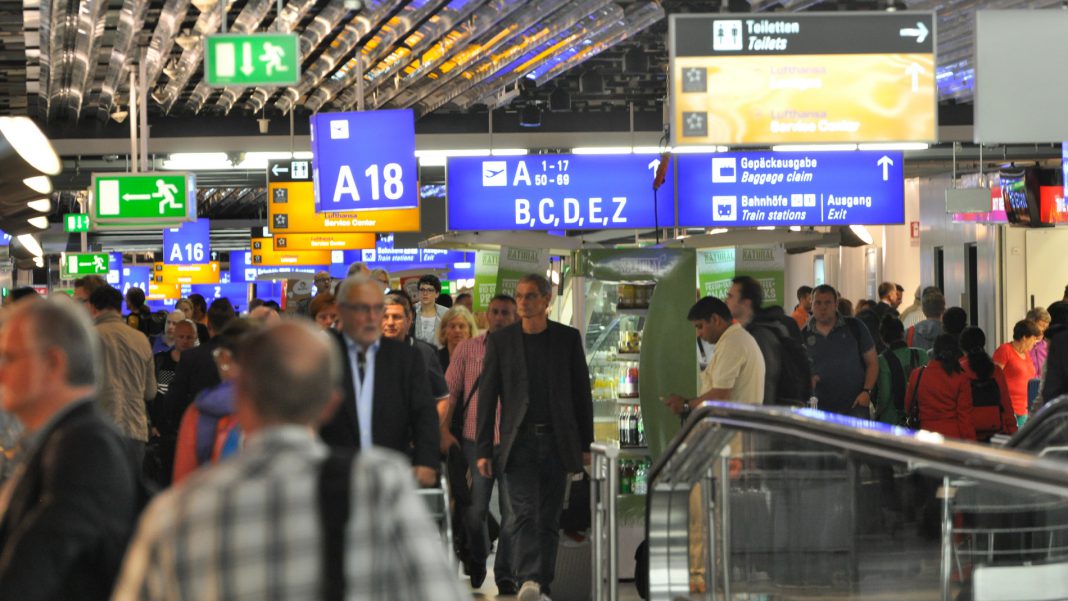According to the first UNWTO World Tourism Barometer of the year, international tourism ended 2023 at 88 percent of pre-pandemic levels, with an estimated 1.3 billion international arrivals.
The unleashing of remaining pent-up demand, increased air connectivity, and a stronger recovery of Asian markets and destinations, are expected to underpin a full recovery by the end of 2024.
Middle East, Europe and Africa performed strongest in 2023
The latest UNWTO World Tourism Barometer provides a comprehensive overview of the sector’s performance in 2023, tracking recovery by global region, sub-region and destination. Key takeaways include:
-The Middle East led recovery in relative terms as the only region to overcome pre-pandemic levels with arrivals 22 percent above 2019.
-Europe, the world’s most visited region, reached 94 percent of 2019 levels, supported by intra-regional demand and travel from the United States.
-Africa recovered 96 percent of pre-pandemic visitors and Americas reached 90 percent.
-Asia and the Pacific reached 65 percent of pre-pandemic levels following the reopening of several markets and destinations.
However, performance is mixed, with South Asia already recovering 87 percent of 2019 levels and North-East Asia around 55 percent.
Available data shows several destinations, including both large, established destinations as well as small and emerging ones, reporting double-digit growth in international arrivals in 2023 when compared to 2019. Four sub-regions exceeded their 2019 arrival levels: Southern Mediterranean Europe, Caribbean, Central America and North Africa.
UNWTO Secretary-General Zurab Pololikashvili says: “The latest UNWTO data underscores tourism’s resilience and rapid recovery, with pre-pandemic numbers expected by the end of 2024. The rebound is already having a significant impact on economies, jobs, growth and opportunities for communities everywhere. These numbers also recall the critical task of progressing sustainability and inclusion in tourism development”
International tourism hit US$1.4 trillion in 2023
The latest UNWTO data also highlights the economic impact of recovery. International tourism receipts reached USD 1.4 trillion in 2023 according to preliminary estimates, about 93 percent of the USD 1.5 trillion earned by destinations in 2019.
Total export revenues from tourism (including passenger transport) are estimated at USD 1.6 trillion in 2023, almost 95 percent of the USD 1.7 trillion recorded in 2019.
Preliminary estimates on the economic contribution of tourism, measured in tourism direct gross domestic product (TDGDP) point to USD 3.3 trillion in 2023, or 3 percent of global GDP. This indicates a recovery of pre-pandemic TDGDP driven by strong domestic and international tourism.
Several destinations reported strong growth in international tourism receipts during the first ten to twelve months of 2023, exceeding in some cases growth in arrivals. Strong demand for outbound travel was also reported by several large source markets this period, with many exceeding 2019 levels.
The sustained recovery is also reflected in the performance of industry indicators. According to the UNWTO Tourism Recovery Tracker, both international air capacity and passenger demand recovered about 90 percent of pre-pandemic levels through October 2023 (IATA). Global occupancy rates in accommodation establishments reached 65 percent in November, slightly above 62 percent in November 2022 (based on STR data).
Looking Ahead to 2024
International tourism is expected to fully recover pre-pandemic levels in 2024, with initial estimates pointing to 2 percent growth above 2019 levels. This central forecast by UNWTO remains subject to the pace of recovery in Asia and to the evolution of existing economic and geopolitical downside risks.
The positive outlook is reflected in the latest UNWTO Tourism Confidence Index survey, with 67 percent of tourism professionals indicating better or much better prospects for 2024 compared to 2023. Some 28 percent expect similar performance, while only 6 percent expect tourism performance in 2024 to be worse than last year. Key considerations include:
There is still significant room for recovery across Asia. The reopening of several source markets and destinations will boost recovery in the region and globally.
Chinese outbound and inbound tourism is expected to accelerate in 2024, due to visa facilitation and improved air capacity. China is applying visa-free travel for citizens of France, Germany, Italy, the Netherlands, Spain and Malaysia for a year to 30 November 2024.
Visa and travel facilitation measures will promote travel to and around the Middle East and Africa with the Gulf Cooperation Council (GCC) countries to implement a unified tourist visa, similar to the Schengen visa, and measures to facilitate intra-African travel in Kenya and Rwanda.
Europe is expected to drive results again in 2024. In March, Romania and Bulgaria will join the Schengen area of free movement, and Paris will host the Summer Olympics in July and August.
Strong travel from the United States, backed by a strong US dollar, will continue to benefit destinations in the Americas and beyond. As in 2023, robust source markets in Europe, the Americas and the Middle East, will continue to fuel tourism flows and spending around the world.
Economic and geopolitical headwinds continue to pose significant challenges to the sustained recovery of international tourism and confidence levels. Persisting inflation, high interest rates, volatile oil prices and disruptions to trade can continue to impact transport and accommodations costs in 2024.
Against this backdrop, tourists are expected to increasingly seek value for money and travel closer to home. Sustainable practices and adaptability will also play an increasing role in consumer choice.
Staff shortages remain a critical issue, as tourism businesses face a shortfall in labor to cope with high demand.
The evolution of the Hamas-Israel conflict may disrupt travel in the Middle East and impact traveler confidence. Uncertainty derived from the Russian aggression against Ukraine as well as other mounting geopolitical tensions, continue to weigh on confidence.


